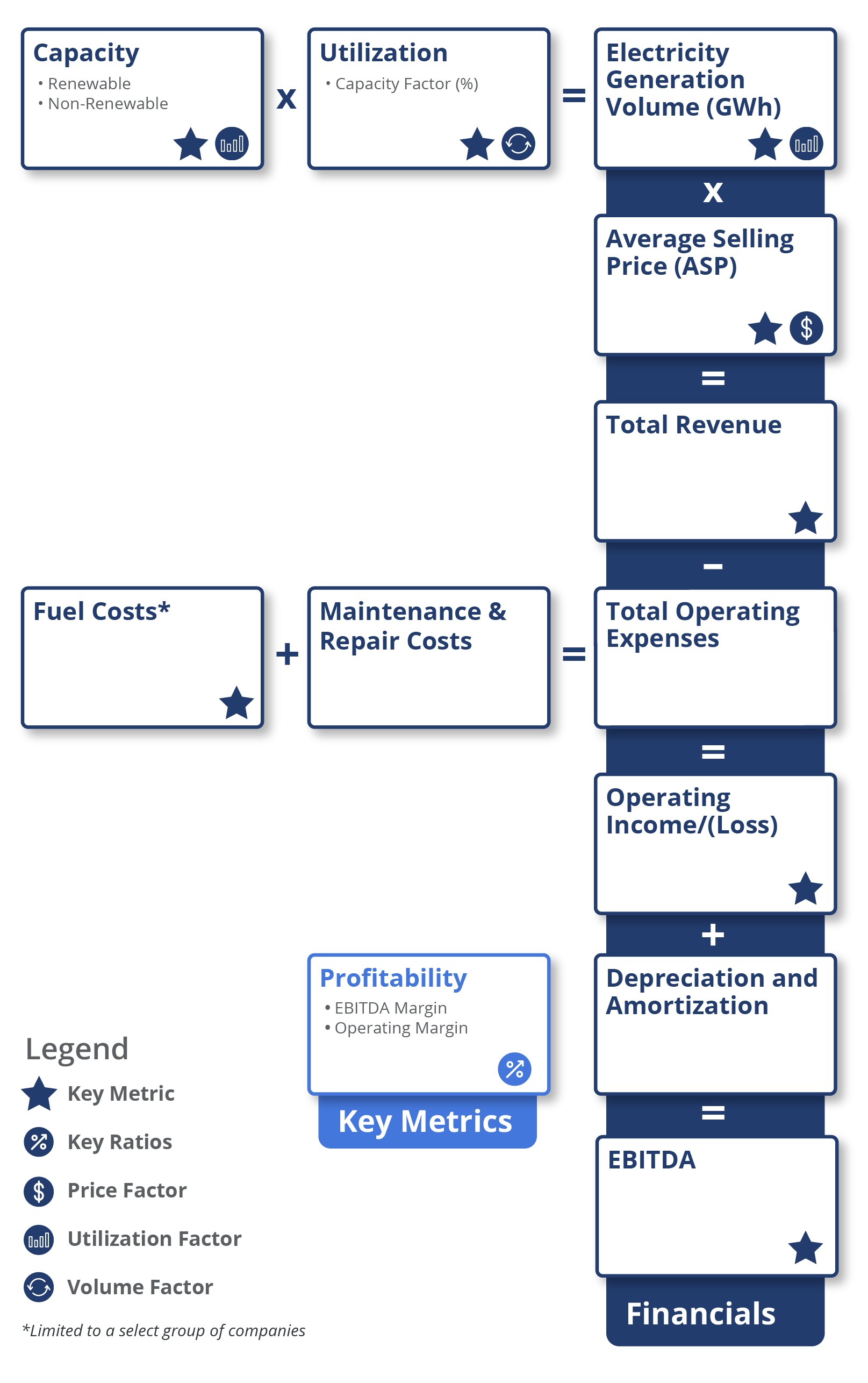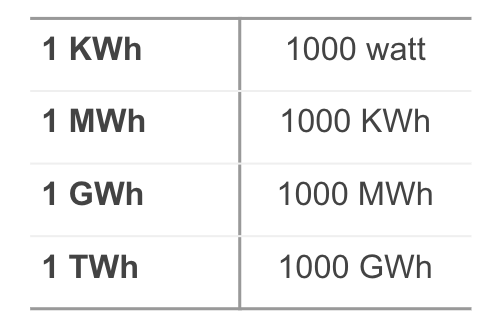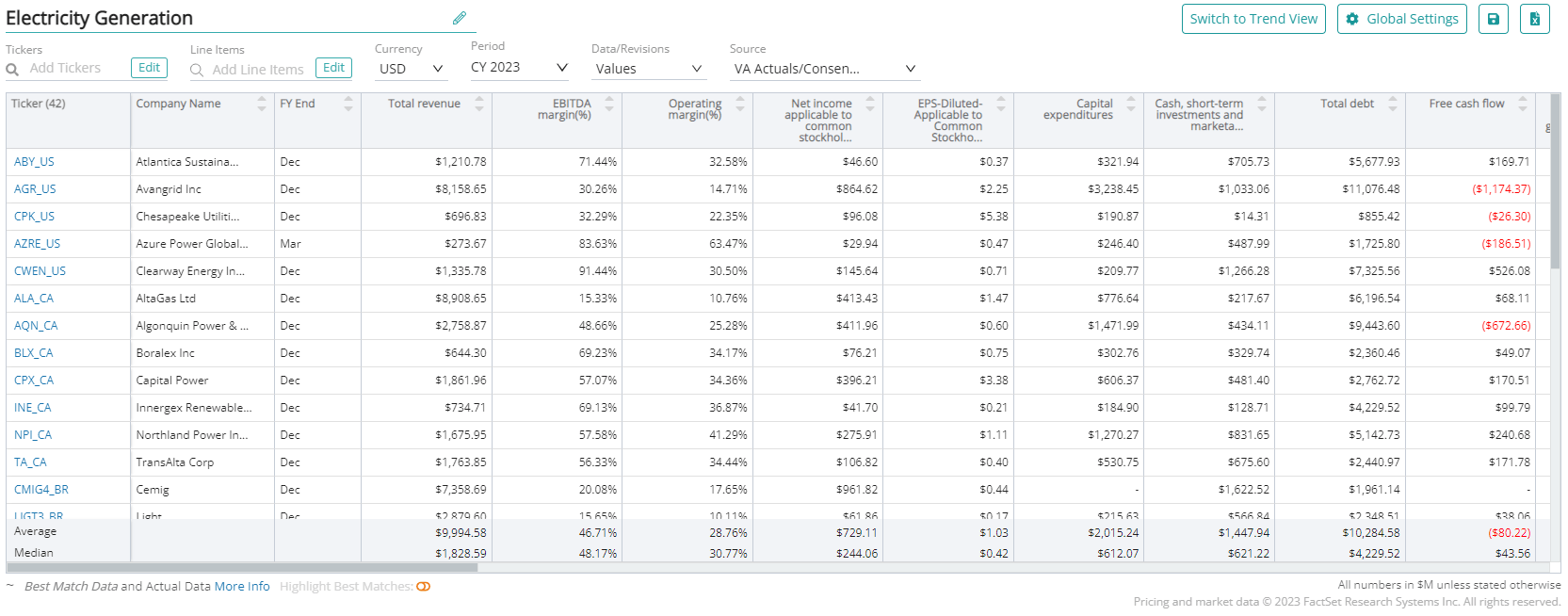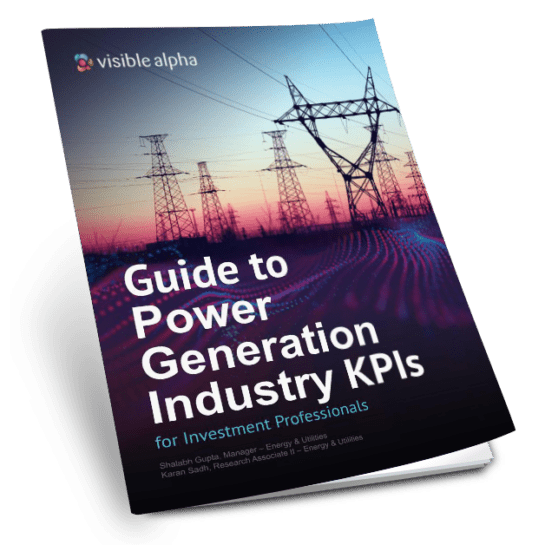Volume is the electricity generated and sold by a power generation company during a given period. A 1 GW power plant operating for 2 hours can generate a volume of 2 GWh electricity, assuming its capacity factor is 100%.
Key performance indicators (KPIs) are the most important business metrics for a particular industry. When understanding market expectations for the power generation industry, whether at a company or industry level, some KPIs to consider include:
Visible Alpha’s Standardized Industry Metrics
To understand market expectations for the power generation industry, a key information source is sell-side analyst estimates and consensus forecast data. The buy-side, sell-side, and public companies leverage this type of data to conduct competitive analysis, a type of analysis conducted by professional analysts that involves comparing standardized metrics of one company with those of similar companies. Because companies report metrics differently – and sometimes report on different metrics altogether – standardizing the key metrics for each company can be a cumbersome process.
Visible Alpha Insights includes analyst data, company data, and industry data at a level of granularity unparalleled in the market. Our industry data – Standardized Industry Metrics – enables market participants to quantify and compare market expectations for companies across 150+ industries.
Data as of March 2023
Power Generation Industry KPI Terms & Definitions
Visible Alpha offers an innovative, integrated experience through real-time, granular consensus estimates and historical data created directly from the world’s leading equity analysts. Using a subset of the below KPIs, this data can help investors hone in on the key drivers of companies to uncover investment opportunities. Learn More >
Watt
Watt is the unit of electrical power equal to one ampere under the pressure of one volt.
Watt Hour (Wh)
Watt hour (Wh) is equal to the energy of one Watt steadily supplied to, or taken from, an electric circuit for one hour.
MW
MW is a measure of electricity equal to 1 million watts.
MWh
MWh is a measure of electricity generation of 1MW produced over one-hour.
Capacity
Capacity is the maximum electric output a power plant can produce at a given point in time. Capacity is generally measured in multiples of kilowatts such as Megawatts (MW) and Gigawatts (GW).
Capacity Factor
Capacity factor, also known as load factor or capacity utilization is the ratio of actual output to the maximum possible output a power plant can produce during a given period.
Volume
Volume is the electricity generated and sold by a power generation company during a given period. A 1 GW power plant operating for 2 hours can generate a volume of 2 GWh electricity, assuming its capacity factor is 100%.
Average Selling Price (ASP)
ASP is the average sales price realized from selling electricity produced by all power plants of a company.
EBITDA Margin (%)
EBITDA margin is a measure of profitability that helps analyze the earnings of a company before interest, taxes, depreciation, and amortization, as a percentage of revenue.
Operating Margin (%)
Operating margin is a profitability ratio that measures the revenue of a company after covering all operating and non-operating expenses.
Total Revenue – Electricity Generation
Total electricity generation revenue is the revenue generated by a power generation company through the sale of electricity. It is calculated by multiplying the total volume of electricity generated by the price per unit of electricity sold.
Download this guide as an ebook today:
Guide to Power Generation Industry KPIs for Investment Professionals
This guide highlights the key performance indicators for the power generation industry and where investors should look to find an investment edge, including:
- Power Generation Business Model & Diagram
- Key Power Generation Industry Metrics PLUS Visible Alpha’s Standardized Industry Metrics
- Available Comp Tables
- Industry KPI Terms & Definitions





